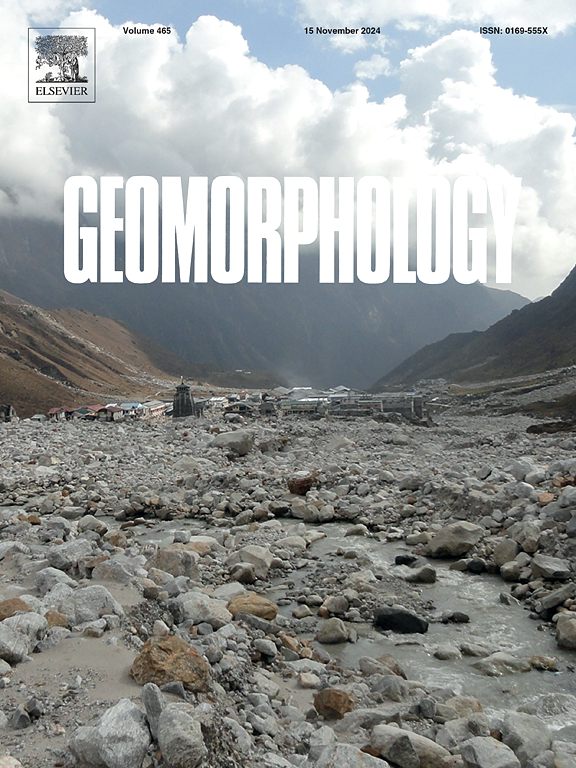Terrain-driven circulation around megadune-lake system in China's Badain Jaran Sand Sea
Lu, Ping , Dong, Zhibao , Shao, Tianjie , Zhang, Zhengcai , Ma, Fang
2025-03-15 null null 473(卷), null(期), (null页)
China's Badain Jaran Sand Sea has the world's largest megadunes. However, hypothesized explanations of their formation are based on weak evidence. To clarify the formation and maintenance mechanisms for these dunes, it's necessary to describe this landform's circulation. In this study, we measured the wind regime around a magadune-lake system from 2019 to 2021 to comprehensively characterize the terrain - driven circulation primarily induced by the roughness - disturbance impact exerted by the megadunes. The circulation generally disperses outward from the lake's center, and wind speed gradually increased from the megadune's bottom to its top. During the daytime, strong winds rise along the megadune's slope; at night, the megadune produces mountain winds and land winds, with downward airflow from the top of the megadune towards the center of the lake, but with low frequency and low wind speed. This creates a resultant drift direction (RDD) that is consistent between day and night, with both RDD pointing towards the megadune's top. RDD changes little between seasons, and is consistent with the annual RDD (from the megadune's bottom to its top). Two factors drive the circulation: First, the dune's height represents a roughness element that creates a deep convective boundary layer that triggers a strong ascending flow. Second, the flow is driven by differences in the thermal properties between the lake and the sand particles. Our results suggest that the terrain-driven circulation around megadune-lake systems flows from the dune's bottom to its top and explains the characteristics of the world's largest megadunes. Our work provides an empirical basis for a more comprehensive understanding of the formation and maintenance of the megadune-lake system.
相关推荐
- Unraveling the non-linear relationship between seasonal deformation and permafrost active layer thickness [2025-03-15]
- Accumulation characteristics and source analysis of microplastics derived traffic of soil in the Tibetan Plateau [2025-03-15]
- Quantitative contributions of different atmospheric circulation systems to Holocene aeolian activity in northwestern China: Evidence from a closed interdune lake in the Tengger Desert hinterland [2025-03-15]
- Ecological effect of the plantation of Sabina vulgaris in the Mu Us Sandy Land, China [2025-03-15]
- Quantifying dune migration patterns and influencing factors in the central Sahara Desert [2025-03-15]



